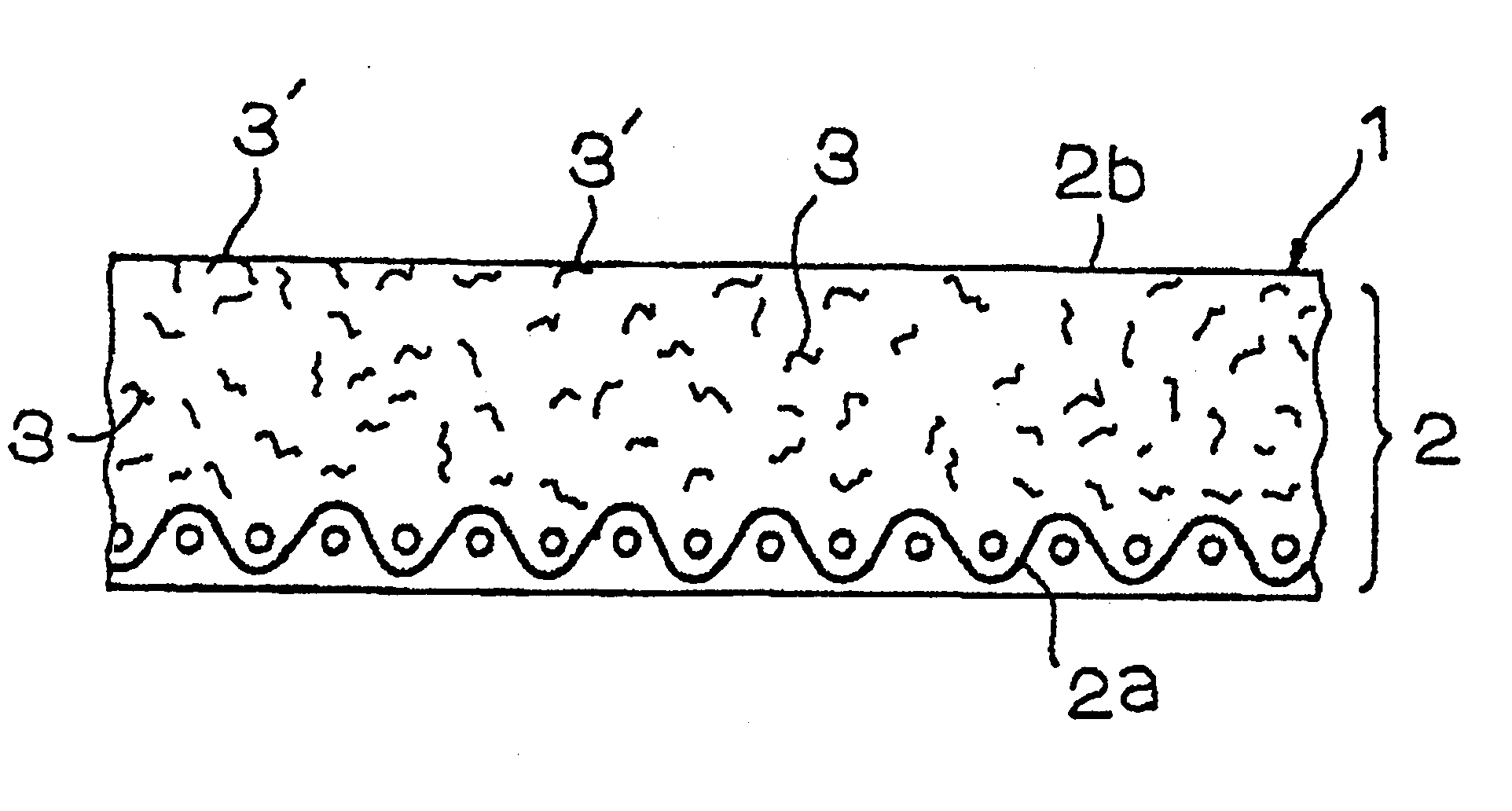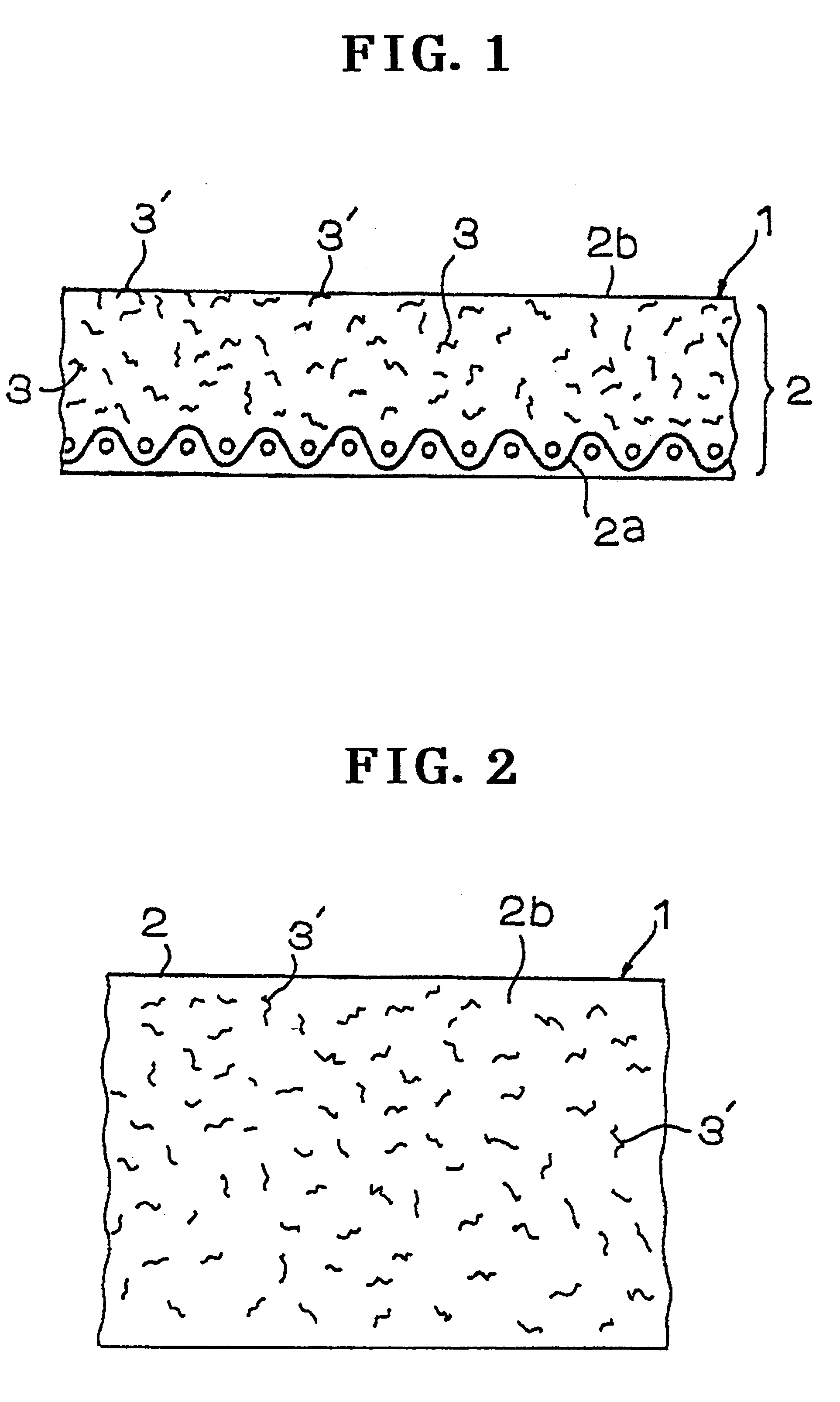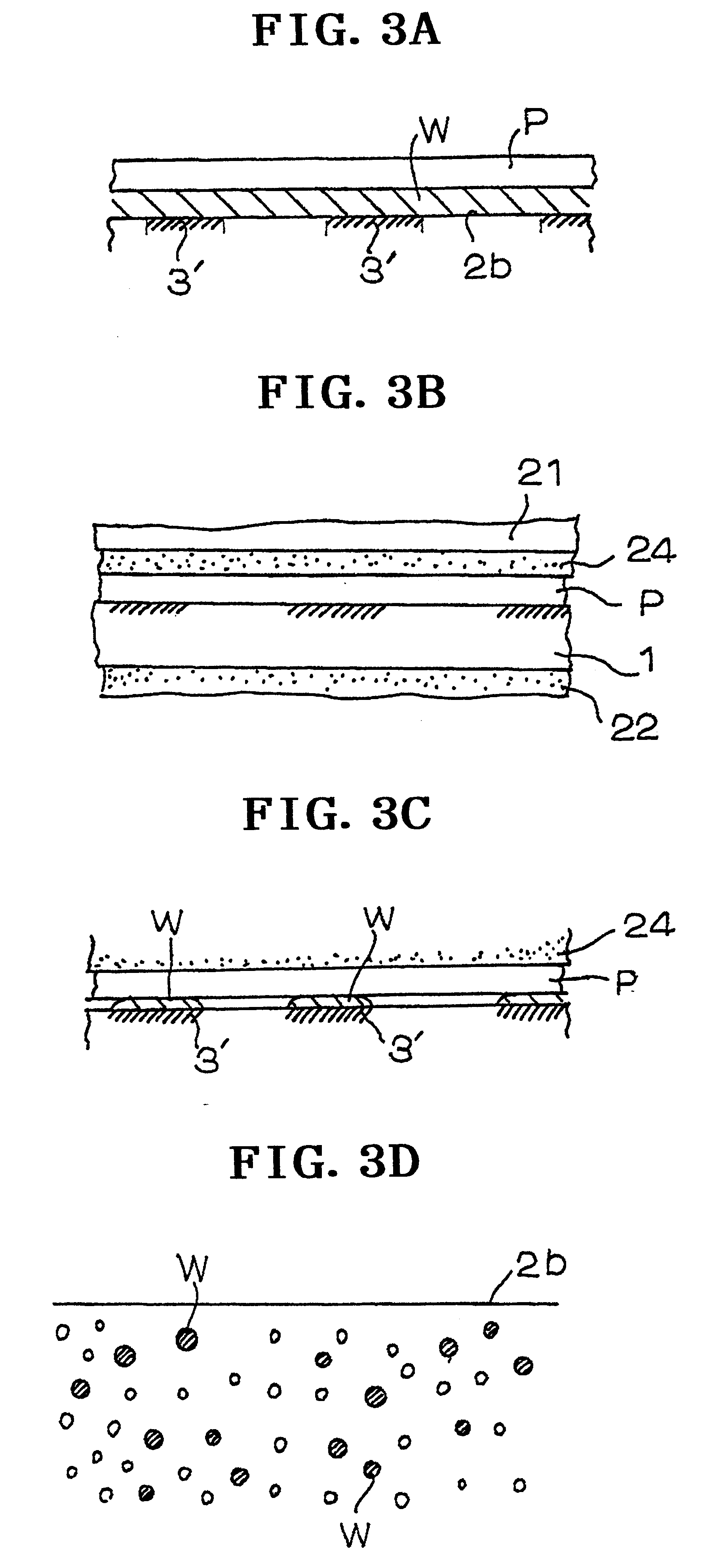Web transfer belt and production process for the same
a technology of transfer belt and production process, which is applied in the direction of weaving, press section, synthetic resin layered products, etc., can solve the problems of poor paper release, control of global thickness, and reduced efficiency of dewatering process, and achieve good paper releasability and stable surface features
- Summary
- Abstract
- Description
- Claims
- Application Information
AI Technical Summary
Benefits of technology
Problems solved by technology
Method used
Image
Examples
example 2
A fiber layer 4b made from nylon staple fibers is stacked on a woven fabric 4a of a 1 / 3 weave design, made from warp yarns and weft yarns each of nylon multi-filaments of a size of 3000 denier. A front fiber layer (a basic weight of 200 g / m.sup.2) is formed of staple fibers of a size of 7 denier made from hydrophobic PTFE (polytetrafluoroethylene) is then stacked on fiber layer 4b to obtain needled felt 4 by further integrating using a needling punch. The needled felt 4 is coat impregnated with thermoset polyurethane resin (a high-molecular weight elastic impregnated resin is cured and thereafter, web-receiving face 2b is polished to form surface layer exposed portions 3' using part of the front fiber layer of the needled felt 4. Thus a web transfer belt 1 is produced (the surface layer exposed portions 3' being hydrophobic). In this case, since the nylon medium-length fiber layer is not impregnated with the non-processed material of high-molecular weight elastic member 2, a belt ha...
example 3
A fiber layer 4b (a basic weight of 200 g / m.sup.2) formed from staple fibers of a size of 7 denier that are made from nylon is stacked on a woven fabric 4a of a 1 / 3 weave design, made from warp yarns and weft yarns each of nylon multi-filaments of a size of 3000 denier to obtain needled felt 4 by further integrating with a needling punch. The needled felt 4 is coat impregnated with thermoset polyurethane resin (a high-molecular weight elastic member 2) mixed with a hydrophobic silicon oil at a content ranging from 3 to 10 wt %. The impregnated resin is cured and thereafter, web-receiving face 2b is polished to form surface layer exposed portions 3' using part of the fiber layer 4b of the needled felt 4. In this way, a web transfer belt is produced (the surface layer exposed portions 3' being hydrophobic) according to the present invention as shown in FIG. 4(a).
example 4
Thermoset polyurethane resin (a high-molecular weight elastic member 2) is coat impregnated using, as the base member 2a, a woven fabric of a 1 / 3 weave design, made from warp yarns and weft yarns each of nylon multi-filaments of a size of 3000 denier and a non-woven fabric 5 (a basic weight of 200 g / m.sup.2) made from hydrophobic PTFE (polytetrafluoroethylene) of a size of 7 denier is buried in a front layer of high-molecular weight elastic member 2 before high-molecule elastic member 2 is cured. After curing of high-molecule elastic member 2, web-receiving face 2b is polished to form surface layer exposed portions 3' using part of non-woven fabric 5 of needled felt 4, thus producing a web transfer belt (the surface layer exposed portions 3' being hydrophobic ) according to the present invention as shown in FIG. 4(b).
PUM
| Property | Measurement | Unit |
|---|---|---|
| surface free energy | aaaaa | aaaaa |
| length | aaaaa | aaaaa |
| surface free energy | aaaaa | aaaaa |
Abstract
Description
Claims
Application Information
 Login to View More
Login to View More - R&D
- Intellectual Property
- Life Sciences
- Materials
- Tech Scout
- Unparalleled Data Quality
- Higher Quality Content
- 60% Fewer Hallucinations
Browse by: Latest US Patents, China's latest patents, Technical Efficacy Thesaurus, Application Domain, Technology Topic, Popular Technical Reports.
© 2025 PatSnap. All rights reserved.Legal|Privacy policy|Modern Slavery Act Transparency Statement|Sitemap|About US| Contact US: help@patsnap.com



